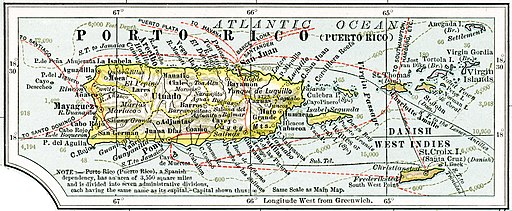Pre-US Puerto Rico

There have been people living on Puerto Rico for upwards of 4000 years [CIA, 2021]. By ~1000 CE the Taíno, who had travelled from South America, were the dominant group on the island (known as Borikén), and remained as such until Christopher Columbus discovered the land in November 1493, claiming it for the Spanish crown [CIA, 2021]. In 1508 the island – renamed by the Spanish as San Juan Bautista – gained its first permanent Spanish settlement, and colonization efforts began. As with the mainland Americas, this resulted in widespread indigenous death from disease and forced labor conditions. While the Spanish brought the slave trade to the island, San Juan Bautista did not gain the same financial investment as other nearby islands such as Cuba. In 1809, to secure the island from other European nations, Puerto Rico was recognized as an overseas province of Spain, offering residents the right to elect representatives to the Spanish government [Mathews, Wagenheim, & Wagenheim, 2021]. In a further attempt to hold the island, the Royal Decree of Graces of 1815 encouraged mainland Spaniards to emigrate. For the remainder of Spain’s hold on Puerto Rico, upwards of 450,000 colonists, mostly Spanish, lived on the island. Due to this history, the island has long had Spanish cultural and linguistic connections that were challenged when ownership changed to the United States in 1898 [Mathews, Wagenheim, & Wagenheim,.2021].